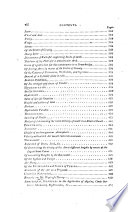 | Isaac Dalby - Mathematics - 1806 - 526 pages
...difference. Of involving Surds: And extracting their Roots. 124. SURDS are involved by multiplying the index by the exponent of the power to which it is to be raised. (100). Thus, the cube of a? is aj X 3 = a*. And the square of (a*— x*)2 is (a*— x*)^ X 2 = a* —... | |
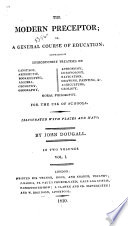 | John Dougall - 1810 - 734 pages
...in the question. Involution of Roots is performed by multiplying the logarithm of the given number by the exponent of the power to which it is to be raised, when the product will be the logarithm of the power required. For example, rajse 8 to the 2nd power,... | |
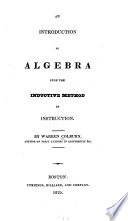 | Warren Colburn - Algebra - 1825 - 400 pages
...and third. The power of a literal quantity, we have just seen, is found by multiplying its exponent by the exponent of the power to which it is to be raised. The second, power of a3 is a3x* = a' ; consequently the second root of a6 is a¥ =; a3. The third power... | |
 | Warren Colburn - Algebra - 1828 - 330 pages
...and third. The power of a literal quantity, we have just seen, is found by multiplying its exponent by the exponent of the power to which it is to be raised. The second power of a3 is a3 x * = a" ; consequently the sej^ cond root of a5 is a* = a3. The third... | |
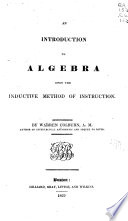 | Warren Colburn - Algebra - 1829 - 284 pages
...is already a power of a compound quantity, may be raised to any power by multiplying its exponent oy the exponent of the power to which it is to be raised. 7. Express the 2d power of (36 — c)4. 8. Express the 3d power of (a — c 9. Express the 7th power... | |
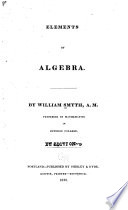 | William Smyth - Algebra - 1830 - 278 pages
...number by means of a •table of logarithms, we multiply therefore the logarithm of the proposed number by the exponent of the power, to which it is to be raised ; the number in the table corresponding to this product, will be the power sought. Again let it be... | |
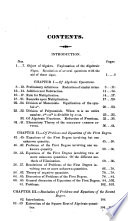 | Bourdon (M., Louis Pierre Marie) - Algebra - 1831 - 446 pages
.../ 3 _ Again, squaring V 3ft, we have V36="^ V3A5 hence ..... t ~ 3 — (v/36)3=v/36. Consequently, when the index of the radical is divisible by the exponent of the power, perform this division, leaving the quantity under the radical as it was. To extract the root of a radical,... | |
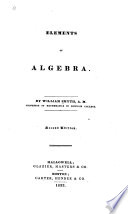 | William Smyth - Algebra - 1833 - 288 pages
...V 5 b to the third power. 3, The proposed may be put under the form \f •& 5 b ; whence Whence if the index of the radical is divisible by the exponent of the power, to which the proposed quantity is to be raised, the operation is performed by dividing the index of the radical... | |
 | Charles Davies - Algebra - 1835 - 378 pages
...the first radical, which gives Again, to square "V3b, we have V 3b—\r 3A/3i • hence Consequently, when the index of the radical is divisible by the exponent of the power, perform this division, leaving the quantity under the radical unchanged. To extract the- root of a... | |
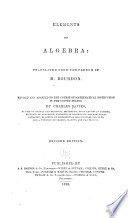 | Algebra - 1838 - 372 pages
...radical, which gives ( V2a) = • / Again, to square "V3i, we have A/3i=\/ 3V3i- hence Consequently, when the index of the radical is divisible by the exponent of the power, perform this division, leaving the quantity under the radical unchanged. To extract the root of a radical,... | |
| |